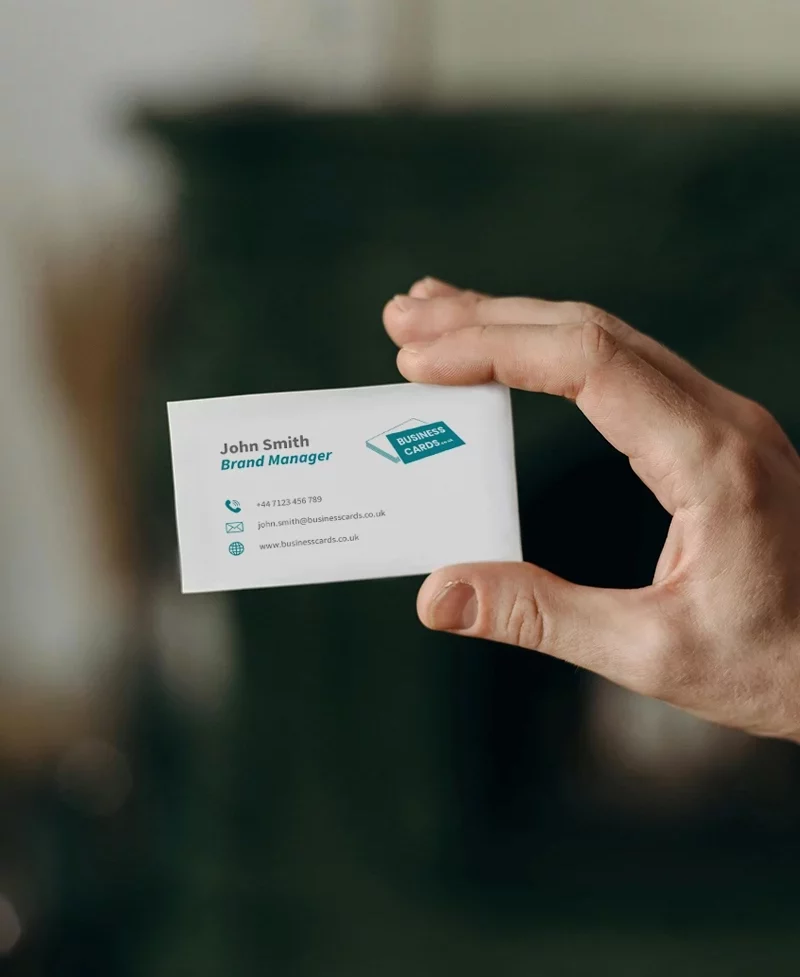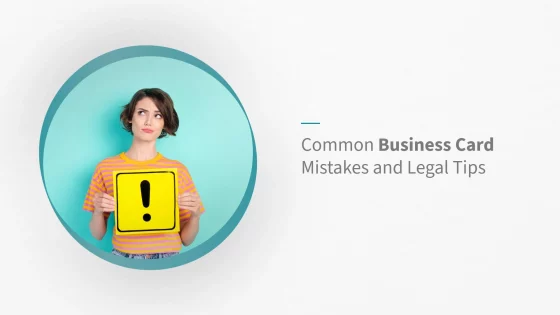Common Business Card Mistakes and Legal Tips
A business card may be small, but it can have a powerful impact. Done right, it helps build trust and leave a lasting impression. Done wrong, it can damage your credibility—or worse, lead to legal complications under UK law. Whether you’re a sole trader, partnership or limited company, this guide will help you avoid costly mistakes and get your professional business cards working harder for your brand.
Why Business Cards Still Matter in the UK
Despite the rise of digital tools, business cards remain essential across the UK. They’re widely used at trade shows, client meetings, and networking events. A well-designed card offers more than just contact information—it signals professionalism and leaves a tangible reminder of your services.
- Quick and reliable way to exchange contact details
- Strengthens brand visibility and consistency
- Encourages face-to-face follow-up
- Still expected in professional UK business culture
Printed stationery—including business cards—continues to support effective branding for UK-based SMEs and sole traders. Learn more about custom stationery options here.

Top Business Card Mistakes That Undermine Your Brand
Even a well-intentioned design can fall flat if you make these common errors:
- Overcrowded layouts – Cramming in too much information creates confusion.
- Poor print quality – Use at least 300gsm stock and sharp images.
- Illegible fonts or colours – Always prioritise clarity and contrast.
- Outdated or incomplete details – Always double-check contact info.
- Unbranded email addresses – Use a domain-based email address.
- No clear call to action – Prompt action with a QR code or booking link.
- Wasted reverse side – Use it for testimonials or promo offers.
What the Law Says: Business Card Requirements in the UK
According to the Companies Act 2006, all UK limited companies are legally required to display the following details on business correspondence, including business cards:
- Full registered company name
- Company registration number
- Place of registration (e.g. England and Wales)
- Registered office address
While the Companies Act 2006 does not impose the same disclosure rules on sole traders or partnerships, it is still considered best practice in the UK to include a trading name, business address, and contact details. If trading under a separate name, add “Trading as [Business Name]”.
Refer to Companies House guidance for more details.
GDPR and Business Cards: What You Need to Know
Under the UK General Data Protection Regulation (UK GDPR) and the Data Protection Act 2018, any business that collects or stores personal contact details—such as those found on business cards—is considered a data controller and must meet legal obligations. This applies whether you’re adding the contact to a CRM, emailing them, or using the information for future marketing.
Key responsibilities include:
- Lawful basis – e.g. consent or legitimate interest must be established.
- Transparency – let contacts know how you’ll use their data.
- Retention – don’t store contact info longer than needed.
- Security – implement proper digital protection.
- Opt-out rights – always offer the ability to unsubscribe.
Under PECR, sole traders must give consent for marketing emails. For limited companies, you may use legitimate interest but must still provide an opt-out. Visit the ICO website for full compliance details.
Designing a Legally Compliant Business Card
A compliant card doesn’t have to be plain. The goal is to balance design with required legal information:
- Include company name, number and registered address (if Ltd).
- Stick to standard UK dimensions for business cards: 85mm x 55mm.
- Use clean, legible fonts with generous spacing.
- Leave space for trim (3mm bleed recommended).
- Add a note if collecting data: “Contact details may be retained for business use. You may unsubscribe at any time.”
Design smartly and responsibly—your brand reputation depends on it.

Business Card Review: Your Final Compliance & Design Checklist
Design Essentials
- Contact information is accurate and up to date
- Layout is balanced and easy to read
- Printed on at least 300gsm stock
- Reverse side used for extra value or branding
Legal and GDPR Considerations
- Includes company name, number and registered office (if applicable)
- Personal data is stored securely and lawfully
- Consent obtained before adding to mailing lists
- Clear opt-out provided for communications
Conclusion
Your business card is more than a name and number—it’s a reflection of your brand and a legal touchpoint. Avoid design flaws and meet legal obligations to make your cards memorable for all the right reasons.
Choose high-quality print, double-check your content, and ensure you’re compliant with UK laws on data and disclosure. A small card can go a long way.
*this article is not intended as any form of advice and acts purely as an educational tool.


